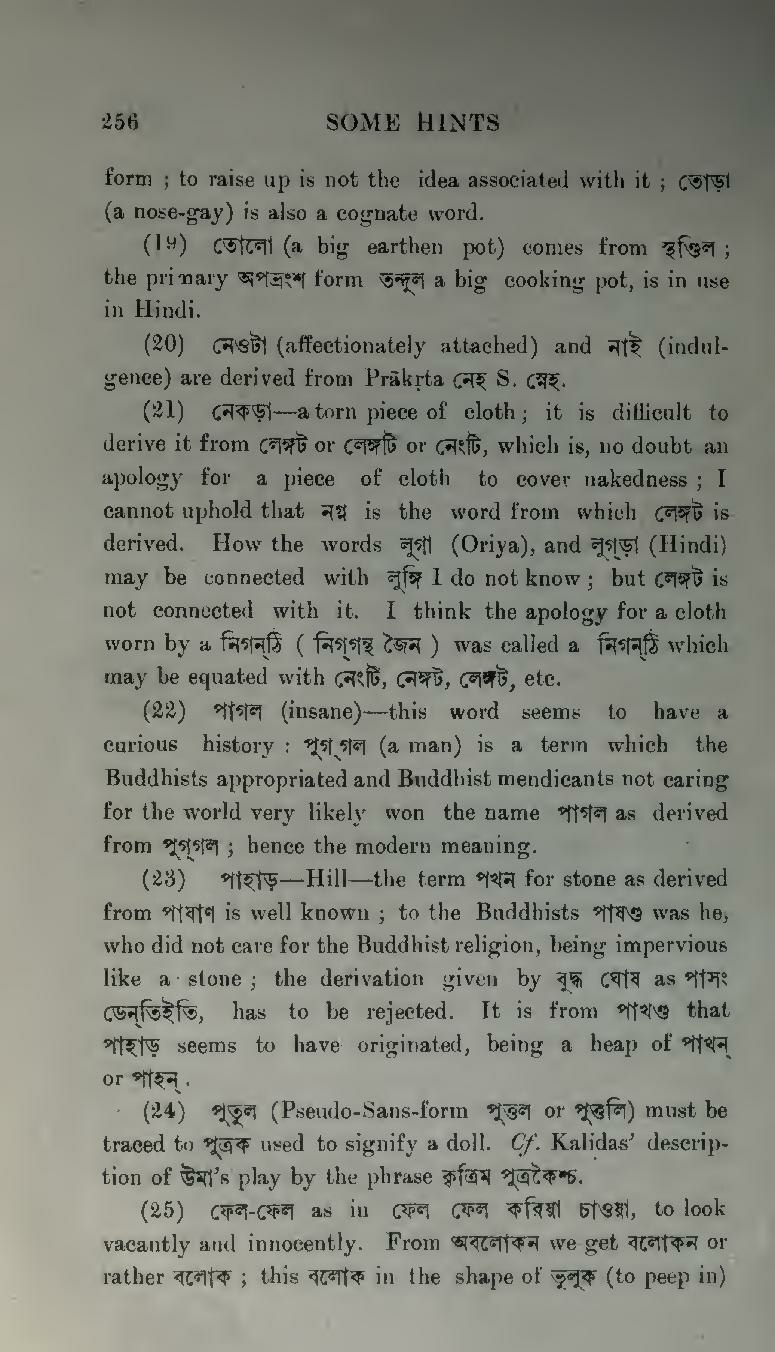form; to raise up is not the idea associated with it; তোড়া (a nose-gay) is also a cognate word.
(19) তোলো (a big earthen pot) comes from স্থণ্ডিল; the primary অপভ্রংশ form তন্দুল a big cooking pot, is in use in Hindi.
(20) নেওটা (affectionately attached) and নাই (indulgence) are derived from Prākṛta নেহ S. স্নেহ.
(21) নেকড়া—a torn piece of cloth; it is difficult to derive it from লেঙ্গট or লেঙ্গটি or নেংটি, which is, no doubt an apology for a piece of cloth to cover nakedness; I cannot uphold that নগ্ন is the word from which লেঙ্গট is derived. How the words লুগা (Oriya), and লুগ্ড়া (Hindi) may be connected with লুঙ্গি I do not know; but লেঙ্গট is not connected with it. I think the apology for a cloth worn by a নিগন্ঠি (নিগ্গন্থ জৈন) was called a নিগন্ঠি which may be equated with নেংটি, নেঙ্গট, লেঙ্গট, etc.
(22) পাগল (insane)—this word seems to have a curious history: পুগ্গল (a man) is a term which the Buddhists appropriated and Buddhist mendicants not caring for the world very likely won the name পাগল as derived from পুগ্গল; hence the modern meaning.
(23) পাহাড়—Hill—the term পখন for stone as derived from পাষাণ is well known; to the Buddhists পাষণ্ড was he, who did not care for the Buddhist religion, being impervious like a stone; the derivation given by বুদ্ধ ঘোষ as পাসং ডেন্তিইতি, has to be rejected. It is from পাখণ্ড that পাহাড় seems to have originated, being a heap of পাখন্ or পাহন্.
(24) পুতুল (Pseudo-Sans-form পুত্তল or পুত্তলি) must be traced to পুত্রক used to signify a doll. Cf. Kalidas' description of উমা's play by the phrase কৃত্রিম পুত্রকৈশ্চ.
(25) ফেল-ফেল as in ফেল ফেল করিয়া চাওয়া, to look vacantly and innocently. From অবলোকন we get বলোকন or rather বলোক; this বলোক in the shape of ভুলুক (to peep in)
